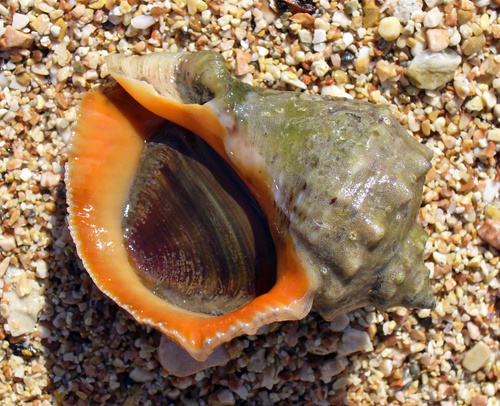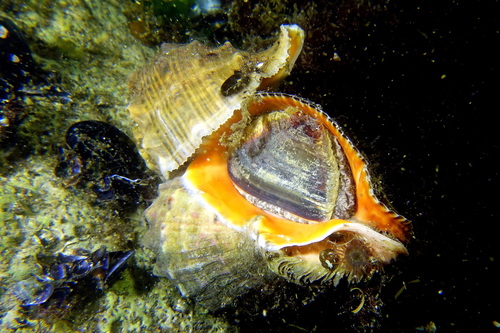
Rapana venosa (Valenciennes, 1846)
Shell globose, with very large body whorl and low conical spire. Spire whorls with a strong shoulder, irregular spiral sculpture. Aperture large, ovate, slightly expanded. Siphonal canal broad, widely open and bearing a series of scales. Τhe colour of the shell is variable from dull grey, to orange-brown, and atypically blonde, with more or less dark brown dashes on the spiral ribs. The aperture and columella vary from deep orange to yellow, or off-white. Shells can reach 168.5 mm or more in size.
Koutsoubas, D., Voultsiadou-Koukoura, E. (1991). Occurrence of Rapana venosa (Valenciennes, 1846) in the Aegean Sea. Bolletino Malacologico 26(10-12): 201-204
1986
UNA
Purple whelk
Rapana venosa has a wide range of habitats, including rocky shores, mussel beds, oyster reefs, sand, silt, eelgrass beds, and pilings, at depths from 0.5 to 25 m. It is carnivorous whose main diet consists of a variety of molluscs including native oysters and may be scavenger on carrion.
R. venosa has become established in the Black Sea with significant damage to native benthos (e.g. bivalves; notably Ostrea edulis, Pecten ponticus, and Mytilus galloprovincialis).
In Ukrainian waters, it destroyed the oyster banks in the area of the Kerch Strait and in Karkinitsky Bay. Hence, the species has a severe impact on all ecosystem services provided by mussel and oyster biogenic reefs.
Yes
No
Records of Rapana venosa
Sites where Rapana venosa has been recorded in the Hellenic Seas.


